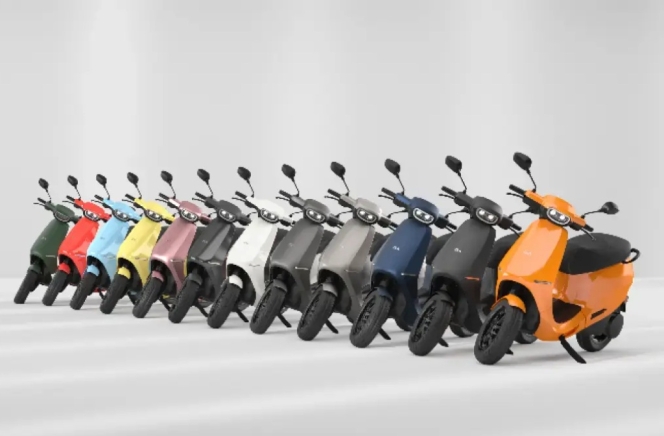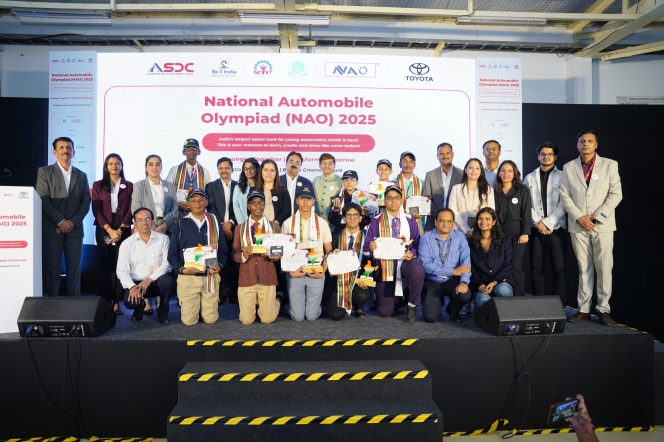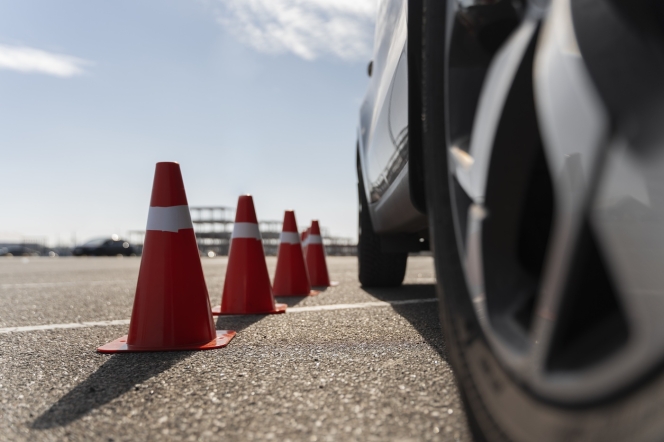- 1 April 2025
- all drivers
- Mumbai
- pay tolls
- using FASTag
- every toll plaza. Maharashtra State Road Development Corporation
- MSRDC
- announcement
- ASTag-only system
- quicker
- easier
- passage
- vehicles
- toll gates
- Mumbai-Pune Expressway
- toll rise
- three percent
- hike
- toll tax
- cost
- consumables
- essential goods
- up
- National Highways Authority of India (NHAI)
- increase
- toll tax
- national highways
- expressways
- poor quality
- unsafe stretches
- key highways
- Pune
- Belgaum
- Mumbai
- Goa
- vehicles
- two-wheelers
- pockets
- burn
- bigger hole
- road fines
- increase
Toll Tax Increase From 1 April 2025; Motor Vehicle Fines Rise Too
- By MT Bureau
- March 19, 2025

From 1 April 2025, all drivers in Mumbai will have to pay tolls using FASTag at every toll plaza. This is in line with Maharashtra State Road Development Corporation’s (MSRDC) announcement some time ago regarding a FASTag-only system to make toll payments, which would facilitate quicker and easier passage of vehicles through toll gates. But that is not the key news. The key news is that the toll on the Mumbai-Pune Expressway will rise by three percent from 1 April 2025. This hike is expected to dig a hole of up to INR 10 in every passenger car owner every time he gets on the respective expressway.
Fully operationalised in April 2002, the Mumbai-Pune Expressway – first of its kind in India – was built on a BOT basis. It cost more than INR 16.3 billion to complete, according to a report found on the Magicbricks.com website dated 5 February 2025. An analysis in 1994 estimated the cost to be INR 11.46 billion.
In its affidavit in response to a PIL filed in the Bombay High Court in 2019 citing a CAG report, MSRDC – the Maharashtra state’s special vehicle that built the respective expressway – mentioned that the CAG failed to consider aspects such as traffic flow in initial years, fluctuation in interest and value of money at the time when the first contract was awarded in 2004.
After taking into consideration the internal rate of return at 16 percent, the total amount recoverable in 2021 was INR 223.7 billion (22,370 crore), MSRDC is known to have stated in its affidavit filed by Kamlakar Phand, Chief General Manager, MSRDC, justifying the extension of contract to collect toll.
Known as India’s highest toll collecting expressway and also the costliest, the toll collection across the nine gates of the expressway in FY2022-23 was an estimated INR 480.28 billion (48,028.22 crore). In FY2023-24, it was an estimated INR 648.09 billion (64,809.86 crore), a 35 percent increase from the previous year. The average daily collection of around INR 1.5 billion in FY2023-24 in the respective fiscal marked an all-time high.
But then it is not just the Mumbai-Pune Expressway that will see a hike in toll tax, driving in turn the cost of consumables, essential goods etc., up, the National Highways Authority of India (NHAI) will also increase the toll tax on national highways and expressways that it governs, effective 1 April 2025, mention sources.
This hike will also touch two-wheelers as stretches such as the Delhi-Lucknow expressway are known to charge toll from that class of vehicles as well. The toll tax increase, sources say, will be in line with the tradition to yearly revise the charges to account for changes in the wholesale price index (CPI)-based inflation.
Not stopping there and not taking into account the poor quality as well as sheer unsafe stretches of key highways such as the one connecting Pune with Belgaum, which is said to have been under construction for many-many years now, or the one that connects Mumbai with Goa, motorists of all class of vehicles, two-wheelers included, should brace themselves to see their pockets burn a bigger hole effective 1 March 2025 as road fines increase.
Not supposed to complain about bad road surface, unsafe road design, crater-like patches or the suddenly appearing speed humps and simply pay the roll tax, motorists found to be under the influence of alcohol will have to pay a fine of INR 10,000 and/or face a six months term in prison for the first offence. Repeat offenders will have to pay INR 15,000 and may face up to 2 years in prison.
Those riding without helmets will have to pay INR 1,000 (earlier it was INR 100) and face license suspension for three months. Failing to wear a seat belt, the fine will be INR 1,000.
Found talking on the phone while driving, the fine will be INR 5,000. Found driving without a valid driving license, the fine will be INR 5,000. Riding triple seat on a two-wheeler, the fine will now be INR 1,000. Sans a valid insurance (insurance attracts 18 percent GST whereas buying a vehicle amounts to between 28 to 50 percent of the price being taxes!), the fine will now be INR 2,000. Besides three months of imprisonment and community service, a repeat offence will see the fine double to INR 4,000.
The absence of pollution certificate will attract a fine of INR 10,000 along with a prison sentence of six months and community service. Dangerous driving and over speeding with attract a fine of INR 5,000 each here after. Blocking of emergency vehicles will lead to a fine of INR 10,000. Overloading of commercial vehicles will lead to a fine of INR 20,000.
Jumping a red signal will attract a fine of INR 5,000. Earlier it was INR 500. Offence committed by juveniles behind the wheel or handlebar will lead to a fine of INR 25,000 rather than INR 2,500. A prison sentence of three years and cancelation of vehicle registration for a year besides ineligibility to get a driving license till the age of 25 will be there too.
Image for representative purpose only.
Ola Electric Receives INR 3.66 Billion In PLI-Auto Incentive For FY2025
- By MT Bureau
- December 25, 2025

Bengaluru-based electric vehicle maker Ola Electric has received a sanction order from the Ministry of Heavy Industries for incentives totalling INR 3.66 billion. The payment is granted under the Production Linked Incentive (PLI) Scheme for Automobile and Auto Components for FY2024-25.
The incentive relates to the Determined Sales Value for the period and will be disbursed through IFCI, the financial institution appointed by the government for the scheme.
The PLI-Auto Scheme is an initiative by the Government of India designed to increase domestic manufacturing and the adoption of advanced automotive technologies. Ola Electric’s eligibility for the claim is based on its vertical integration and localisation of electric vehicle (EV) components.
“The sanction of INR 3.66 billion under the PLI-Auto Scheme is a strong endorsement of Ola Electric’s manufacturing capabilities and our commitment to building world-class EV technology in India. This incentive recognises our sustained efforts in scaling domestic production, deepening localisation, and driving innovation across the electric mobility value chain. We remain committed to supporting the Government of India’s vision of making India a global hub for advanced automotive manufacturing and clean mobility,” said the company in a statement.
bp To Sell 65% Stake In Castrol To Stonepeak For $10.1 Billion
- By MT Bureau
- December 25, 2025

UK-based energy major bp has reached an agreement to sell its 65 percent shareholding in Castrol to investment firm Stonepeak at an enterprise value of USD 10.1 billion. The deal follows a strategic review of the lubricants business and is expected to result in net proceeds for bp of approximately USD 6 billion.
The transaction includes USD 0.8 billion as a pre-payment of future dividend income on bp’s retained 35 percent stake. The valuation represents an enterprise value to EBITDA ratio of approximately 8.6x. Following the sale, a new joint venture will be formed with Stonepeak holding the majority interest and bp retaining 35 percent.
The sale is a component of bp's USD 20 billion divestment programme. To date, the company has announced or completed divestments totalling USD 11 billion.
Proceeds from the Castrol transaction will be used to reduce bp’s net debt, which stood at USD 26.1 billion at the end of the third quarter of 2025. The company aims to reach a net debt target of USD 14–18 billion by the end of 2027. bp has a two-year lock-up period on its remaining 35 percent stake, after which it has the option to sell.
Carol Howle, interim CEO, bp, said, “Today’s announcement is a very good outcome for all stakeholders. We concluded a thorough strategic review of Castrol, that generated extensive interest and resulted in the sale of a majority interest to Stonepeak. The transaction allows us to realise value for our shareholders, generating significant proceeds while continuing to benefit from Castrol’s strong growth momentum. And with this, we have now completed or announced over half of our targeted USD 20bn divestment programme, with proceeds to significantly strengthen bp’s balance sheet. The sale marks an important milestone in the ongoing delivery of our reset strategy. We are reducing complexity, focusing the downstream on our leading integrated businesses, and accelerating delivery of our plan. And we are doing so with increasing intensity – with a continued focus on growing cash flow and returns and delivering value for our shareholders.”
Anthony Borreca, Senior Managing Director, Stonepeak, said, “Lubricants are a mission-critical product, which are essential to the safe and efficient functioning of virtually every vehicle, machine, and industrial process in the world. Castrol’s 126-year heritage has created a leading market position, an iconic brand, and a portfolio of differentiated products that deliver meaningful value to its customers. We are excited to work alongside Castrol’s talented employees, coupled with bp’s continued guidance as a minority interest holder, as we support the business’s continued growth.”
The transaction is expected to complete by the end of 2026, subject to regulatory approvals. bp stated that the move allows the company to simplify its portfolio and focus its downstream operations on integrated businesses.
- Automotive Skills Development Council
- ASDC
- Central Board of Secondary Education
- CBSE
- Toyota Kirloskar Motor
- National Automobile Olympiad
- Dr Biswajeet Saha
- Vinkesh Gulati
- G Shankara
ASDC, Toyota Kirloskar Motor, CBSE Host National Automobile Olympiad 2025
- By MT Bureau
- December 24, 2025

The Automotive Skills Development Council (ASDC), in collaboration with the Central Board of Secondary Education (CBSE) and Toyota Kirloskar Motor (TKM), concluded the National Automobile Olympiad (NAO) 2025. The event took place from 17–19 December at Toyota’s manufacturing facility in Bidadi.
The initiative, aligned with the Skill India Mission, is designed to introduce school students to careers in the automotive and mobility sectors. The Olympiad saw participation from 175 students in Classes VI to XII. These participants were selected from an initial pool of over 136,000 students from schools across India and the UAE.
The three-day event included:
- Industry Masterclasses: Sessions led by experts on automotive fundamentals and emerging technologies.
- Technical Challenges: Competitions covering robotics, welding precision and technical problem-solving.
- Future Mobility Modules: Exposure to hybrid vehicles, data science and AR/VR tools.
- Industry Immersion: Visits to the Toyota manufacturing plant, the Toyota Technical Training Institute (TTTI) and test-track experiences.
The Olympiad concluded with the announcement of winners across three categories:
|
Category |
1st Place |
2nd Place |
3rd Place |
|
Grades 6–8 |
Abeer Verma (Bhopal) |
Aaradhy Pradhan (Ghaziabad) |
Dakhsh Kumawat (Indore) |
|
Grades 9–10 |
Anchit Sahai (Maharashtra) |
Arjun Annamalai (Chennai) |
Mahatva Jain (Jaipur) |
|
Grades 11–12 |
Nishanth Sudhakar (Chennai) |
Vidhan Herpalani (Dubai) |
Punith Kumar (Bengaluru) |
Dr Biswajeet Saha, Director, Training & Skill Education, CBSE, said, “We are delighted to see Toyota Kirloskar Motor hosting National Automobile Olympiad, which perfectly aligns with CBSE’s vision of experiential and skill-based learning. Events like this provide students with invaluable exposure to real-world automotive excellence and industry best practices. They also bridge the gap between classroom learning and practical application, inspiring young minds.”
Vinkesh Gulati, Chairperson, ASDC, said, “National Automobile Olympiad is a powerful platform to spark curiosity and channel young talent toward the automotive sector. ASDC is committed to building a future-ready workforce, and collaborations such as this with Toyota Kirloskar Motor provide students early exposure to real-world industry practices. The enthusiasm and technical aptitude displayed by participants reaffirm our belief in India’s next generation of mobility professionals.”
G Shankara, Executive Vice-President, Toyota Kirloskar Motor, stated, “We are proud to collaborate with ASDC in nurturing young minds through NAO 2025. By offering experiential learning and access to world-class skilling infrastructure, we aim to inspire students to innovate and contribute meaningfully to the future of mobility while supporting the Skill India vision.”
The programme concludes a cycle of assessments and training intended to bridge the gap between academic learning and industrial application in the automotive sector.
- SIAM
- Society of Indian Automobile Manufacturers
- National Road Accident Reduction Challenge 2026
- Safe Journey
- Prashant K Banerjee
- Devashish Handa
- Suzuki Motorcycle India
SIAM Launches National Road Accident Reduction Challenge 2026 For Students
- By MT Bureau
- December 23, 2025

The Society of Indian Automobile Manufacturers (SIAM) has launched the National Road Accident Reduction Challenge 2026 under its ‘Safe Journey’ initiative. The competition invites undergraduate students across India to develop solutions aimed at improving road safety and reducing fatalities.
The challenge targets undergraduate students in teams of two to four. Participants are required to submit field-tested or ready-to-implement ideas across several themes:
- User-centric interventions
- Technology-driven safety
- Infrastructure improvement
- Evaluation and enforcement
Submissions must include a 15–20 slide concept deck backed by data validation, fieldwork, or prototypes. The deadline for nominations is 15 January 2026, with final projects due by 1 March 2026.
Shortlisted teams will present their projects to a jury consisting of representatives from SIAM, vehicle manufacturers (OEMs), transport authorities and NGOs. The winning team will be awarded a cash prize of INR 250,000 at the SIAM SAFE Annual Convention 2026.
Prashant K Banerjee, Executive Director, SIAM, said, “In India, around 485 people lose their life daily due to road accidents. India’s young minds have the power to drive real change on our roads. The National Road Accident Reduction Challenge 2026 is designed to channel their creativity, problem-solving skills, and sense of responsibility into practical interventions that can be implemented on the ground. By engaging students as partners in road safety, SIAM aims to foster a culture of accountability, innovation, and safer mobility for the nation.”
Devashish Handa, Executive Officer, Suzuki Motorcycle India (SMIPL), said, “Road safety is a key focus area of Suzuki Motorcycle India’s CSR efforts. We believe that student-led innovation can contribute meaningfully to safer mobility in India. Through SIAM’s National Road Accident Reduction Challenge 2026, we aim to strengthen road safety ethics among the young generation and encourage practical, on-ground interventions to help bring down road fatalities.”






Comments (0)
ADD COMMENT